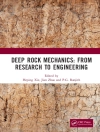Worldwide, the use of natural gas as a primary energy source will remain vital for decades to come. This applies to industrialized, emerging countries and developing countries. Owing to the low level of impurities, natural gas is considered to be a climate-friendly fossil fuel because of the low CO2 emissions, but is at the same time an affordable source of energy.
In order to enable transport over long distances and oceans (and hence create an economic and political alternative to pipelines) , the gas is liquefied, which is accompanied by a considerable reduction in volume, and then transported by ship. Thus, at international ports, many LNG tanks are required for temporary storage and further use. The trend towards smaller liquefaction and regasification plants with associated storage tanks for marine fuel applications has attracted new players in this market who often do not yet have the necessary experience and technical expertise. It is not sufficient to refer to all existing technical standards when defining consistent state-of-the-art specifications and requirements.
The switch to European standardisation has made it necessary to revise and adapt existing national codes to match European standards. Technical committees at national and international level have begun their work of updating and completing the EN 14620 series.
In the USA, too, the corresponding regulations are also being updated. The revision of American Concrete Institute standard ACI 376 Requirements for Design and Construction of Concrete Structures for the Containment of Refrigerated Liquefied Gases, first published in 2011, will be completed in the spring of 2019, and the final version, published in autumn 2019.
This book provides an overview of the state of the art in the design and construction of liquefied natural gas (LNG) tanks. Since the topic is very extensive and complex, an introduction to all aspects is provided, e.g. requirements and design for operating conditions, thermal design, hydrostatic and pneumatic tests, soil surveys and permissible settlement, modelling of and calculations for the concrete structure, and the actions due to fire, explosion and impact. Dynamic analysis and the theory of sloshing liquid are also presented.
قائمة المحتويات
Editorial vii
About the Author ix
1 Introduction 1
Reference 3
2 History of Natural Gas Liquefaction 5
2.1 Industrialisation and Energy Demand 5
2.2 The Beginnings of Gas Liquefaction 6
2.3 The First Steps Towards Transport in Ships 9
2.4 Algeria Becomes the First Exporter 11
2.5 Further Development with Peak-Shaving Plants 12
2.6 The First German LNG Tank in Stuttgart 13
2.7 Wilhelmshaven – the Attempt to Establish a German Receiving Terminal 14
2.8 The Liquefaction of Gas in Australia 15
2.9 Pollutant Emissions Limits in the EU 21
References 23
3 Regulations and their Scope of Applicability 25
3.1 History of the Regulations 25
3.2 EEMUA Publication No. 147 and BS 7777 26
3.3 LNG Installations and Equipment – EN 1473 28
3.4 Design and Construction of LNG Tanks – EN 14620 29
3.5 API 620 – the American Standard for Steel Tanks 32
3.6 API 625 – Combining Concrete and Steel 33
3.7 ACI 376 – the American Standard for Concrete Tanks 33
References 34
4 Definitions of the Different Tank Types 37
4.1 Definitions and Development of the Different Types of Tank 37
4.2 Single Containment Tank System 38
4.3 Double Containment Tank System 40
4.4 Full Containment Tank System 40
4.5 Membrane Tank System 44
References 47
5 Performance Requirements and Design 49
5.1 Performance Requirements for Normal Operation 49
5.2 Thermal Design 51
5.3 Hydrostatic and Pneumatic Tests 52
5.4 Soil Survey, Soil Parameters and Permissible Settlement 54
5.5 Susceptibility to Soil Liquefaction 56
References 58
6 Tank Analysis 59
6.1 Requirements for the Analysis of the Concrete Structure 59
6.2 Requirements for the Model of the Concrete Structure 60
6.3 Strut-and-Tie Models for Discontinuity Regions 62
6.4 Liquid Spill 65
6.5 Fire Load Cases 68
6.6 Explosion and Impact 72
References 74
7 Dynamic Analysis 77
7.1 Theory of Sloshing Fluid 77
7.2 Housner’s Method 79
7.3 Veletsos’ Method 81
7.4 Provisions in EN 1998-4, Annex A 82
7.4.1 Hydrodynamic Pressure on Tank 83
7.4.2 Masses and Associated Lever Arms 85
7.5 Seismic Design of LNG Tanks 88
References 92
8 Construction 93
8.1 Construction Phases and Procedures 93
8.1.1 Base Slab 93
8.1.2 Tank Wall 94
8.1.3 Ring Beam 97
8.1.4 Tank Roof 97
8.1.5 Concrete Roof 100
8.2 Wall Formwork 102
8.3 Reinforcement 105
8.4 Prestressing 108
8.5 Tank Equipment (Inclinometers, Heating) 111
8.6 Construction Joints 114
8.7 Curing of Concrete Surfaces 115
References 115
9 Summary 117
Index 119
عن المؤلف
Dr.-Ing. Josef Rötzer (born in 1959) studied civil engineering at the Technical University of Munich and later obtained his Ph D at the Bundeswehr University Munich. From 1995 onwards, he worked in the engineering head office of Dyckerhoff & Widmann (DYWIDAG) AG in Munich. His area of responsibility included the detailed design of industrial and power plant structures. The DYWIDAG LNG Technology competence area, focusing on the planning and worldwide construction of liquefied gas tanks, was integrated into STRABAG International in 2005. Josef Rötzer is a member of the Working Group for Tanks for Cryogenic Liquefied Gases of the German Standards Committee and a member of the committee for the American code ACI 376.












